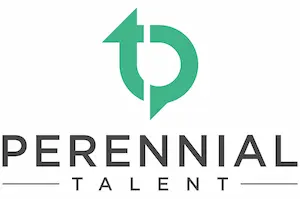What Types of Competencies Are Right for You?
There are four main types of competencies that can be used to describe successful job performance for your jobs.
The four types include:
- Core Competencies
- Job Family Competencies
- Job Specific Competencies
- Leadership Competencies
Which Competencies Should You Use?
The answer is: Any of the above!
They can be used in any combination. It really depends on what you are trying to do. For example, some organizations when they use competencies for this first time, focus on just core competencies. Core competencies are a good type to start with because they apply to all employees across the entire organization. As your competency framework becomes more sophisticated, you may start to use the other types of competencies.
Let’s explore these 4 types of competencies with examples of when you might want to use them.
Core Competencies
What are they? Core competencies apply to every job within your organization and are linked to the vision and values of the organization. For example, if placing the customer first is a critical value for your organization, then you can map this value to a core competency, such as customer-centric. Core competencies also help to link all employees’ behaviour to the goals of the organization. For example, if one of the goals of your organization is to be number one in your market when it comes to developing new products, then making sure that everyone is focused on innovative behaviours becomes very important.
When to use them? Core competencies can be a way to bring your organizational values to life, give them meaning, and make them observable and measurable. You may wish to consider using them if you are looking for ways to hire people and keep people that share your organization’s values and culture. They describe “how” people need to be able to behave if your organization is going to achieve its goals (e.g., what does putting the customer first look like?)
Job Family Competencies
What are they? Job family competencies apply to a subset or grouping of jobs within the organization that share a common function or logical career stream. For example, your organization could have an IT job family that includes a Problem-Solving job family competency, because problem-solving is critical to all jobs within the IT job family.
When to use them? Job family competencies can be used to develop people’s competencies related to a specific career plan which can make talent planning easier. They can help you to align and optimize the use of learning resources tied to competencies. Job Family competencies also allow you to describe the “how” or key behaviours that employees need to achieve area/team KPIs or OKRs.
Job Specific Competencies
What are they? Job specific competencies apply to a specific job or subset of jobs. For example, an IT Project Manager role could require a Project Management competency, whereas an IT Support Desk role might not require project management but perhaps an IT Troubleshooting competency instead.
When to use them?Job specific competencies get at the specific requirements for a job ensuring a proper fit between the employee and the job, and in turn results in more targeted talent management (e.g., selection and development). You can use job specific competencies to hire people that have the key behaviours needed to be successful for a job (e.g., job fit). You can use them to help employees set individual learning and development goals tied to the requirements of their job. Job specific competencies also describe the “how” or key behaviours that employees need to achieve their individual KPIs or OKRs.
Leadership Competencies
What are they? Leadership competencies apply to roles with leadership responsibilities. These competencies define behaviours that focus on what it takes to provide vision, set strategy, act with integrity, and help support others to set and reach their goals. Typically, smaller organizations where leaders are highly involved in the day-to-day operations treat leadership competencies as job specific competencies, whereas larger organizations interested in developing a cadre of leaders treat leadership competencies as job family competencies.
When to use them? Leadership competencies can help to develop the cadre of leaders so that you can tailor your learning and development and succession planning programs to the behaviours leaders need. You can use them to identify high potentials. They also allow you to describe the “how” or key behaviours that leaders need as opposed to technical experts/individual contributors within your organization.
So…Which Types of Competencies Should You Use?
Just remember to keep things simple. You may not need to include every type of competency when setting up your competency framework. Focus on your pain points and what you are trying to achieve!


